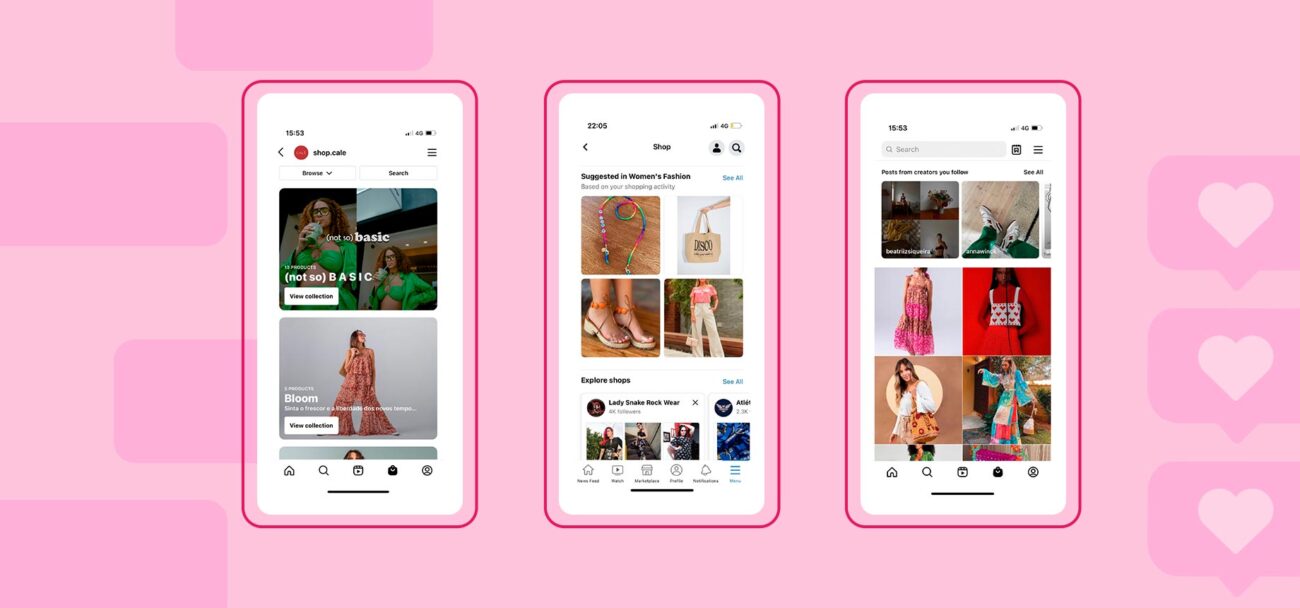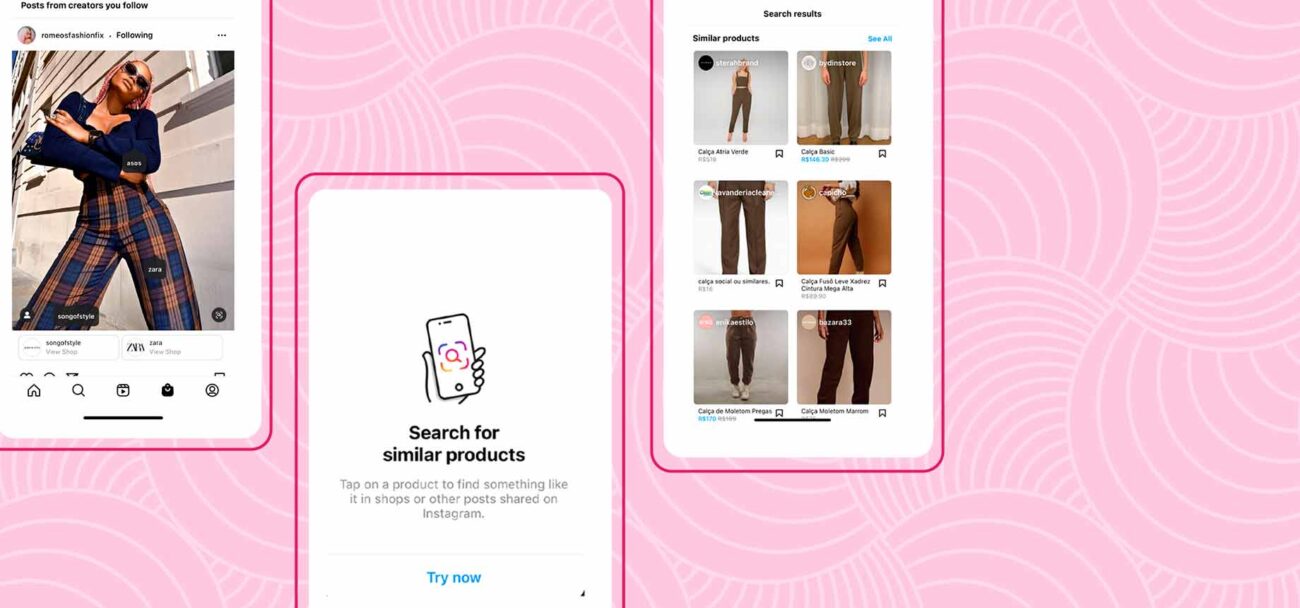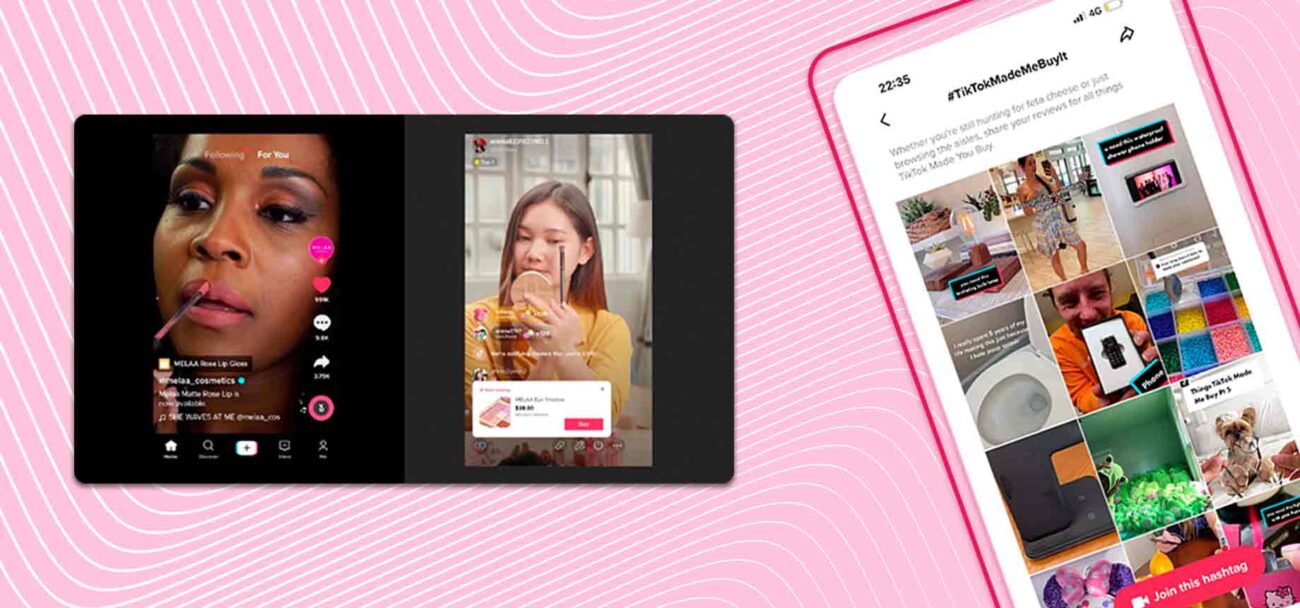
Humans are social beings. We use our social skills to build relationships, exchange information and connect with others. In the digital world, social media platforms started as a way for people to share tidbits of their lives, catering to that social part of humanity. But, as time passed and digital transformation went on, brands started looking at social media as so much more than just a place to check in with friends and family.
Today, 72% of US adults, ranging from young adults to older demographics, say they use some type of social media. When you think about it, it is pretty rare to find someone who isn’t active on social media these days. That is why retailers and business owners should grab the opportunity that social networks have to offer — and gain visibility.
The definition of social selling
Using social media to connect with potential customers, expand brand presence, engage leads and, consequently, sell more is called social selling. It is not just a social media marketing strategy, but a new way of selling through a channel that has never been explored for selling, but for engaging.
Social selling is about building trust through organic product discovery and the force of the community voice that most social media platforms can harness. For instance, research has shown that 49% of consumers rely on influencer recommendations when making their shopping choices. That’s why most brands are increasing their influencer marketing budgets every year.
Having social media profiles is nothing new for brands, but having an integrated social media store is a new tool that has been popularized after the COVID-19 pandemic first started.
While things gradually get back to normal, it is safe to say that the ecommerce revolution has changed the way customers relate to selling and buying products. They go beyond product discovery and are able to place an order right then and there, without leaving the app.
This reduces any type of friction and is proven to increase conversion rates and lead generation. According to a Linqia survey, 86% of business owners already use shoppable links to allow consumers to instantly go from inspiration to purchase.
Major social networks have already seen first-hand the impact of social selling for both brands and users. The main strategy is connecting to the social proof that comes from internet influencers, a product catalog, and the ability for customers to immediately see where that product is from and how to get it.
How to start social selling?
As with most online ecommerce trends, social selling comes with its own set of benefits and challenges. Remember, this is one more channel for your brand and a more complex one, involving not only the sales process but also marketing, customer service — both public and privately — product exposure, catalog set-up and updates, connecting links… the list goes on. With enough planning and a good approach, business owners can enjoy the benefits of adopting this sales strategy.
Social selling benefits
Social commerce can offer a lot of benefits since it is a new way for potential customers to reach out to brands they know they can trust without disrupting their online experience.
Some benefits include:
- Brand credibility. One of social media’s strongest advantages is called “social proof.” That is also something humans rely on heavily when behaving in society, so having someone your customers trust providing them with opinions and content of a specific product is good for credibility.
- Brand visibility. Customers are more likely to discover your products when browsing through social media than by going directly to your website. This is very good for small and medium-sized businesses because now they are able to reach a whole new audience.
- Convenience. A good shopping experience must be frictionless and as fast as possible. Social shopping removes extra steps and helps customers promptly get what they need.
- Enhanced customer experience. Social media allows customers to be closer to the brand by commenting, interacting and sending messages with their questions. Being extra attentive to these customers is key for maintaining a loyal fanbase and nurturing consumers who will eventually promote your brand organically amongst their friends and followers.
Social platforms’ tools overview

For an effective social selling strategy, there needs to be platform support for professional and personal brands. Without the proper technical resources, sales and marketing teams can be a bit lost while trying to carry on a social selling plan. Today, each major social network out there has already started or is on its way to developing some kind of social selling tool. LinkedIn, Twitter, Facebook, to name a few. Here is an overview of what they offer to professional brands and partners.
Facebook Shopping
Facebook — or should we say Meta? — has already launched resources such as Facebook Shopping, Facebook Marketplace and Instagram Shopping. As part of its Facebook for Business section, it has invested deeply in creating shopping environments and engaging customers, influencers and brands alike for partnerships that are the essence of the social selling concept.
These became so popular and important for Facebook’s strategy that the home pages of these apps now have shortcuts leading users directly to a shopping page.
Instagram Shopping
Beyond the regular brand and product pages, Instagram has used another strategy involving social selling. Influencers and brands are allowed to tag the product they are advertising, leading customers directly to a shopping link. Also, artificial intelligence tools are able to track similar products from only one post.

Facebook Live Shopping
Facebook’s live shopping feature is included as a section inside the Shop button on the Facebook app and website. It is a way to create shopping events that are broadcast live. In that sense, sales reps are able to showcase their products in real-world situations, plus interacting and answering questions from customers, therefore adding detail and value to the product.
Shoppers can buy straight from the livestream while products are being displayed. This tactic has worked in multiple cases, not only social media, but it is safe to say that customers are more likely to watch a livestream on a social network rather than on an ecommerce website.
TikTok Shopping
Just recently announced, TikTok has launched global social selling tools involving both dynamic ads and live shopping techniques for brands to enjoy. Their full service includes direct integration (where everything from product upload to point of purchase, shipping and fulfillment can be done within TikTok) and partner integration (through a third-party commerce platform).
With the boom of shopping hauls on what is called #fashiontok (or, fashion TikTok) and the rise of the hashtag #TikTokMadeMeBuyIt (with over 6 billion accumulated views on videos!), this environment is a great way to grow your brand organically.
And influencers are all around, too. TikTok has invested $1 billion USD in the Creator Fund – a way to reinforce the importance of creators inside the platform by offering financial gain based solely on views. More people advertising means more space for brands on the app.

YouTube Live Shopping
While on the subject of hauls, why not talk about where it all started? Video is the keyword for social media these days, and the first format of a social media platform involving videos was YouTube. It has come a long way since starting out almost 16 years ago, but it is keeping up with the trends.
Since February 2021, YouTube has been beta-testing its live shopping feature and the plans are to release it during the upcoming holiday season. The goal with this launch is for YouTube “to communicate credibility to advertisers and provide them with detailed user information that has become increasingly inaccessible”.
YouTube has already hosted live shopping events featuring small businesses and sponsored influencer streams, but the feature isn’t available for all brands or the general public as it is in the platforms mentioned above.
Twitter Shopping
Twitter is a significantly new player to the social selling market. It has already added “Buy Now” buttons to ads, but these are rather primitive. The platform has recently announced its Shop Module, a dedicated space at the top of a profile where businesses can showcase their products.
When people visit a profile with the Shop Module enabled, they can scroll through the carousel of products and tap through on a single product to learn more and purchase — seamlessly in an in-app browser, without having to leave Twitter. For now, the feature is only available for users in the US, with plans of expanding to a global level soon.
The future of social media shopping
Remember that social selling is not only about placing products on social media platforms and waiting for the money to come in. There are a lot of strategies connected to the concept of social selling that all aim to do the same thing: put the end-customer at the center of this experience.
Social selling is all about the power of social networks: social listening, social proof, exchanging tips and, above all, building trust. Customers want a safe space where they are comfortable in knowing every piece of information that they need to know they can find on the palm of their hand.
But what to expect of ever-changing social commerce trends? Easy: the key to social selling is being able to create a unit. By merging different features such as live shopping, conversational commerce, influencer marketing and organic and paid ad campaigns, businesses and brands can achieve a seamless social selling experience for their customers.
Last but not least, pay attention to the numbers: social commerce sales are expected to reach $79.64 million USD in the US by 2025. In a world where social integration is key, more and more social media features will offer social selling, and those who aren’t in on it yet should hurry.













